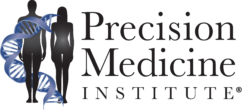New precision medicine breakthrough will enable 3D printing of medications that are personalized to specific patients’ needs
A new study has provided a technological breakthrough that makes it practical to create personalized medications. Research by Procter and Gamble (P&G) has proven the concept that 3D printing technology can be used to inexpensively create customized medications for patients.
This study explores several potential means of customization. Medications can be printed to include specific doses, specific release rates and release times, and can even be combined with multiple medications.
What If We Could Consolidate Multiple Medications into One?
“Once a patient is diagnosed with a certain condition, a specific treatment method is chosen,” the researchers wrote. “This can be done by fabricating a personalized tablet for the individual: the personalization includes a customized dosage and duration of drug release that can be catered to the patient’s needs.”
“Conceptually, [precision medicine] can allow the medical practitioner to prescribe a single medication that consists of a combination of multiple drugs based on the patient’s characteristics with a suitable dosage and release profile,” the researchers continued. “In this way, the combination of drugs in a single tablet needs to be taken only once, instead of taking multiple pills together and at different times in a day.”
P&G Has Developed a New 3D Printing Method Specific to Personalized Medication Dosing
The new 3D printing method created by P&G works by creating a cylinder-shaped tablet that is coated to prevent the medication from escaping the tablet except through one face of the cylinder. The medications can be layered inside the cylinder to control the order that multiple medications are released in.
This technology also allows the pharmacies printing the medications to control how quickly each medication is released. This allows doses to be administered quickly or slowly, depending upon the therapeutic effect needed.
While researching this 3D printing method focused on how a cylinder-shaped tablet could be created, researchers also emphasized that the technology could be used to create multiple tablet shapes and sizes, depending on the specific needs of each patient. The shape could even be altered to a patient’s specific preference based on the shape that is easiest for a patient to swallow.
Precision Medicine Strategy: Custom-Made Pills Fabricated on the Spot After Diagnosis
This precision medicine strategy could potentially be implemented on a widespread basis. “For the approach of [precision medicine] to be effective, the drug tablets need to be easily fabricated, customizable, and highly affordable,” P&G researchers explained while discussing the approach they used. “These characteristics would encourage widespread usage of the customized drug tablets and allow the drug tablets to be fabricated on the spot after diagnosis.”
The implications of 3D printing customized medicines could be impactful for precision medicine. In an ideal situation, someone taking multiple medications at varying times throughout the day, that need to be released at different rates, could theoretically take a single, custom-made pill each day that provides every medication they need throughout the day.
Because managing multiple medications simultaneously is an ongoing challenge for people living with health conditions, interventions to improve safe and effective medication use have long been sought — to varying degrees of success. The research by P&G not only makes a new form of uniquely customized medication delivery possible, but it suggests a means of providing medications that could be both inexpensive and safe. While this technology is still nascent, the cutting-edge research that is emerging here makes it close to being implementable by early adopters of precision medicine.
– Caleb Williams
Related Information:
P&G Closer to Customizing Drug Tablets Thanks to 3D Printing
Customizable drug tablets with constant release profiles via 3D printing technology
Setting the Foundation for a Best-in-Class Precision Medicine Program
